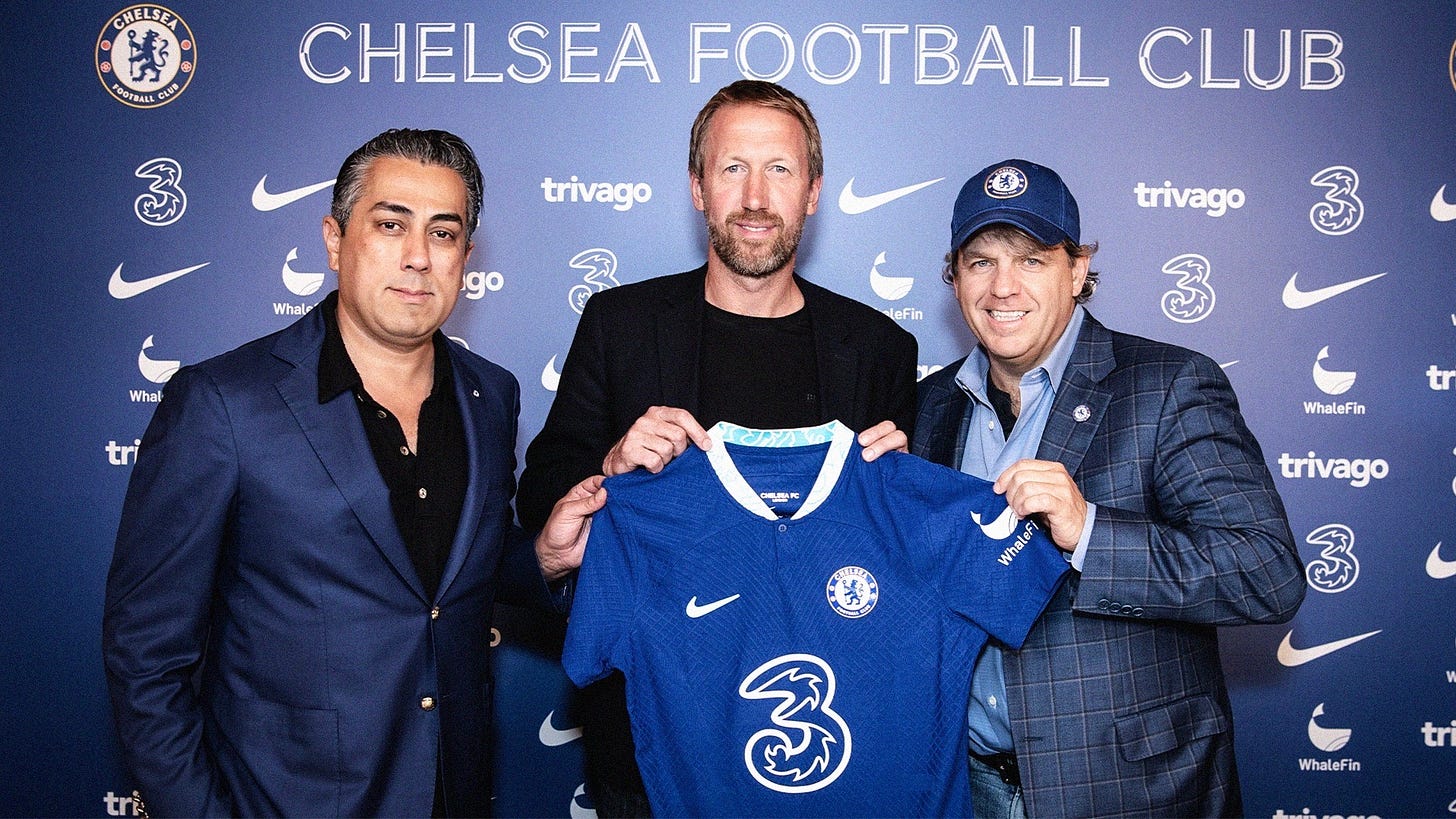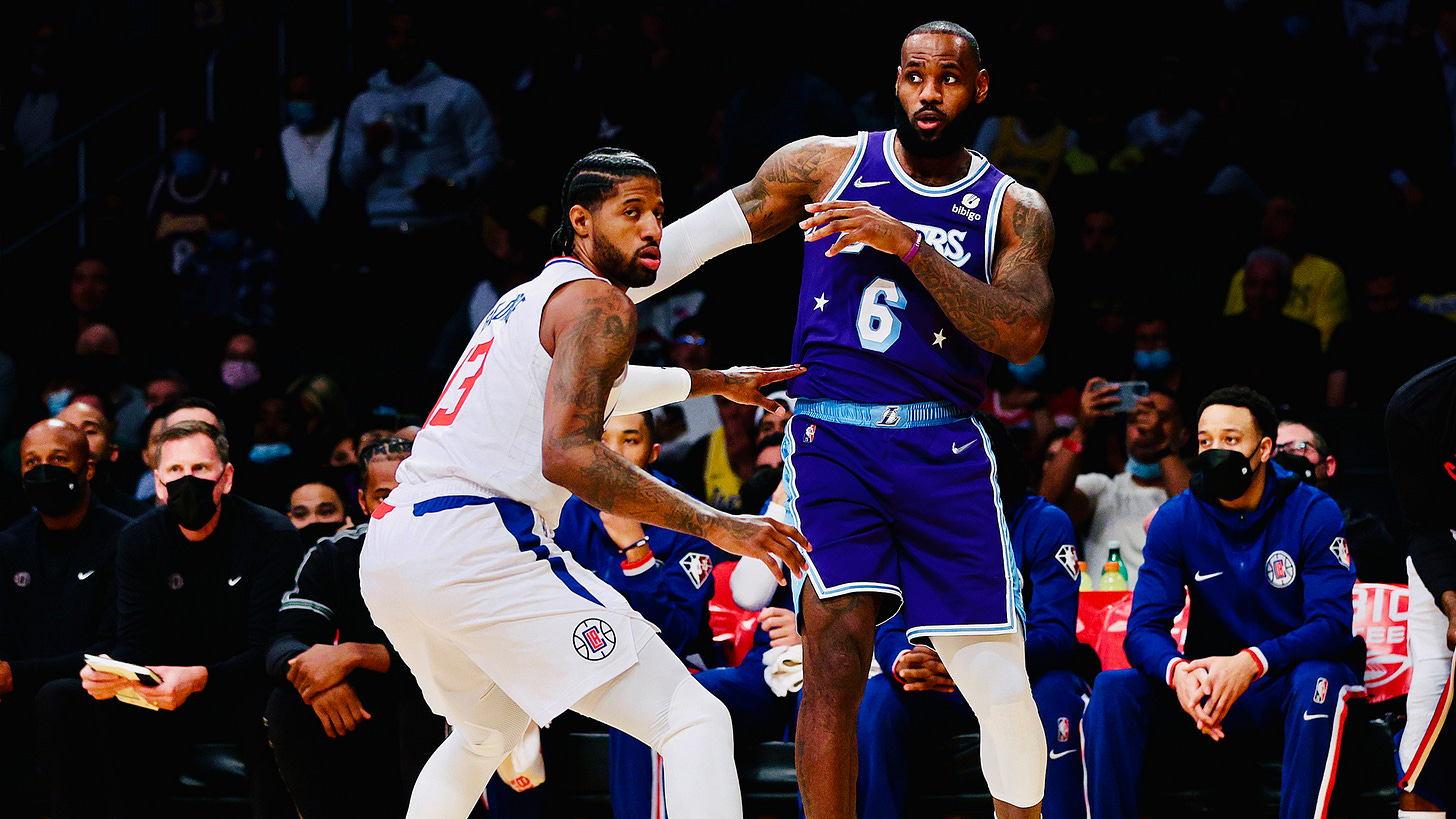[I should probably write about John Yems, Crawley Town, the Football Association, racism in English football, and what “conscious racist” means, but due to its systemic nature, ample opportunity will exist for that over the length of this project.]
Being a sports agent appeals to me, but numbers and I have a complicated relationship.
Cousins of lawyers and used car salespeople, agents are synonymous with swindling and skullduggery. Sports fans particularly despise them because their job is to defund teams. Enough defunding or manoeuvring can destabilise a club, causing them to miss certain objectives. I understand the disdain.
My temptation is in advocacy—being a line of defense for athletes to get what they should and annoying billionaires along the way. It’s a beautiful concept if done with genuine care for the people one represents, but the pursuit of profit often muddies the water (as with most things).
What brings us here is Todd Boehly and Clearlake Capital.
As a consequence of the Russo-Ukrainian War, Chelsea Football Club was made available last year. The eventual buyer was a previous suitor. A Boehly-led consortium approached Roman Abramovich in 2019 but was rejected. The American and his crew returned three years later with a geopolitical tailwind. Under the supervision of the United Kingdom, Boehly and Clearlake’s £4.25 billion bid was accepted last May, and for eight months Chelsea have wreaked havoc in the transfer market.
Wesley Fofana: £69.5m, Mykhailo Mudryk: £62m, Marc Cucurella: £56m, Raheem Sterling: £47.5m, Benoît Badiashile: £35m, Kalidou Koulibaly: £33m, Noni Madueke: £28.5m, Carney Chukwuemeka: £20m, Andrey Santos: £18m, Cesare Casadei: £13m, Pierre-Emerick Aubameyang: £10.3m, João Félix: £9.7m (loan fee), Gabriel Slonina: £8.1m, David Datro Fofana: £8m, Denis Zakaria: £2.7m (loan fee).
Total: £421.3m (without add-ons)
The sum spent in two windows is unbridled for a hierarchy without football experience, but more interesting than the fees—or even the volume—are the contract lengths being offered.
Casadei, Cucurella, and Chukwuemeka signed for six years. David Datro Fofana signed for six-and-a-half years. Wesley Fofana signed for seven years. Madueke and Badiashile signed for seven-and-a-half years. Mudryk signed for eight-and-a-half years. When five is standard, these lengths are jarring. The west London club “are accused of using long-term deals to cheat [Financial Fair Play] rules,” per the Daily Mail’s Matt Hughes.
Chelsea are pursuing long contracts for accounting in the initial.
Transfer fees and wages are written off over the length of a player’s deal. The longer the contract, the less clubs put on their books each fiscal year, allowing them to better comply with whatever financial regulations their league and federation employ unless they’re Juventus. Accountants call it amortisation.
Having an ownership stake in MLB’s Los Angeles Dodgers, Boehly has carried concepts across the Atlantic. Baseball players are routinely signed to lengthy deals. Mookie Betts of the Dodgers has a 12-year, $365 million contract. Giancarlo Stanton of the New York Yankees has a 13-year, $325 million contract. Fernando Tatis Jr. of the San Diego Padres has a 14-year, $340 million contract. There are many examples with star players.
Boehly—who also has an ownership stake in the Los Angeles Lakers—isn’t having to deal with an NBA model. To make sense, some quick groundwork…
In 1970, Oscar Robertson and several others filed a lawsuit against the NBA. The outcome was free agency in 1976. Before the case, players were effectively tied to one team unless traded. This NBA was not yet an international league. In the United States, the Finals were broadcast on tape delay. Then three things happened.
1978: Boston Celtics draft Larry Bird a year early.
1979: L.A. Lakers draft Magic Johnson.
1979: Bird and Johnson enter the league together.
And upon this rock I will build my church.
To avoid free agency, Los Angeles signed Johnson to a 25-year, $25 million contract extension in 1981 (which took effect in 1984), making him a lifelong Laker. Considering the NBA was a bourgeoning league, securing $25 million in 1981—the richest deal in sports to that point—probably seemed smart. One problem: Everything changes all the time.
Using Magic and Bird’s already-kindled rivalry from college and an already-established tension between Boston and Los Angeles—the NBA skyrocketed in popularity. In the 1980s, the Celtics and Lakers won eight of 10 titles and played each other in three Finals. Tape delay, no longer. People wanted to see the two stars dazzle, and with attention came money. The second Johnson’s extension triggered he was the NBA’s most underpaid player given his value to the league and Los Angeles.
The late 1980s and 1990s saw the arrival of Michael Jordan and the Chicago Bulls. Chicago took over what Boston, L.A., and Julius Erving’s Philadelphia built; they made the NBA not just a national attraction but an international obsession. In the period of globalisation and post-globalisation, terms of every length were given. Chris Webber signed a 15-year contract. Shawn Kemp, Penny Hardaway, and Grant Hill signed seven-year deals. Combinations of injury and circumstance soured those deals, but regardless: NBA teams were happy to give long contracts.
Fast forward to now; the longest agreements are five years. This was collectively bargained in my estimation to protect franchises from creating nooses for their own necks with bad, extensive deals. They perhaps didn’t factor how players would respond to this imposed limit.
Logic says “take as much as you can, when you can,” but contracts don’t exist in a vacuum. The $1 million Johnson earned in 1984 was not the same $1 million he received in 2009 when his contract expired. Inflation meant the Lakers paid far less than the $25 million agreed upon in 1981. Boehly and Clearlake certainly understand this concept. The longer a contract runs, the less you pay. Not just on paper for accounting purposes, but in actual value.
The response of NBA players and agents to five-year commitments has not been bargaining for longer terms, but signing shorter contracts with player options. This creates flexibility. If a team doesn't want to extend, a player can announce they’re leaving, and maybe get traded somewhere that will sign them. If they get injured along the line, they still have four years—and with today’s medicine even Achilles ruptures aren’t fatal (see Kevin Durant).
This approach allows leverage against a league that generates more money each season, but limits the amount players can make. The more contract years you have, the easier it is to earn the most you can relative to the rate of growth. If Johnson had negotiated three times in 10 years, instead of one time over 25 years, he makes more than $25 million.
If achievable in a league with a salary cap, then this is certainly achievable in leagues without salary caps.
“I might not be as good later.”
- You’ve already started on the wrong foot. They think you will, or they wouldn’t have offered seven years.
“What if I get injured?”
- Then you get injured, but there aren’t football-related injuries that kill the careers of 21-year-olds in 2023. Callum Hudson-Odoi got £120,000 a week after rupturing his Achilles. You recover and get back.
“If I’m good they will renegotiate.”
- You can’t guarantee that. Why risk them taking advantage of the deal? They saw your potential and wanted to lock you down. It’s your job to believe in yourself more than they believe in you. What happens if you want out (see Harry Kane)? What happens if you outgrow the club (see Wilfried Zaha)? What happens if the coach doesn’t play you, and you lose value (see Winston Bogarde)? What happens if you are better than what the contract says, but they don’t come to the table with a fair offer (see Sadio Mané)?
“I have a family and community to support.”
- An athlete’s career isn’t a writer’s career. A writer can write for 50 years. You have a limited timeframe to trade your skill. In that sense, time must be maximised. If you perform over the next three years, they will agree to better terms than now. If not, they lose you for free. As a free agent, without a transfer fee, you and your people will be more than supported (see Aaron Ramsey).
“It’s my dream club.”
- Real Madrid was Eden Hazard’s dream club. Chelsea was Romelu Lukaku’s dream club. Barcelona was Memphis Depay’s dream club.
Dreams only happen when you’re asleep.
Beyond earning potential: Is it wrong when I see six years, seven years, or eight years, I think of indentured servitude?
I understand footballers are well paid, and their form of work is a child’s game. They aren’t asked to farm land, chop wood, or build railroads, but there’s something about signing a contract for seven-and-a-half years (no matter the sport) that terrifies me.
Maybe I have commitment issues—I need to work on them—but I have no idea what I’ll want in seven-and-a-half minutes, but you know what you’ll want in seven-and-a-half years? Nothing is so stable you can predict how it will look, feel, or operate in seven-and-a-half years. That level of foresight and confidence in a project is staggering.
As you’d expect from a consortium putting billions into a football club, the picture from Boehly and Clearlake is there. Chelsea’s idea seems straightforward—even if the plan is oddly shaped. Institutions have long-term vision. Players must have long-term vision also, but the two shouldn’t see the same thing. Athletes have one chance to get their careers right. An institution can fail dozens of times, perhaps hundreds or thousands, and still stand.
The stakes aren’t the same. 🎯









